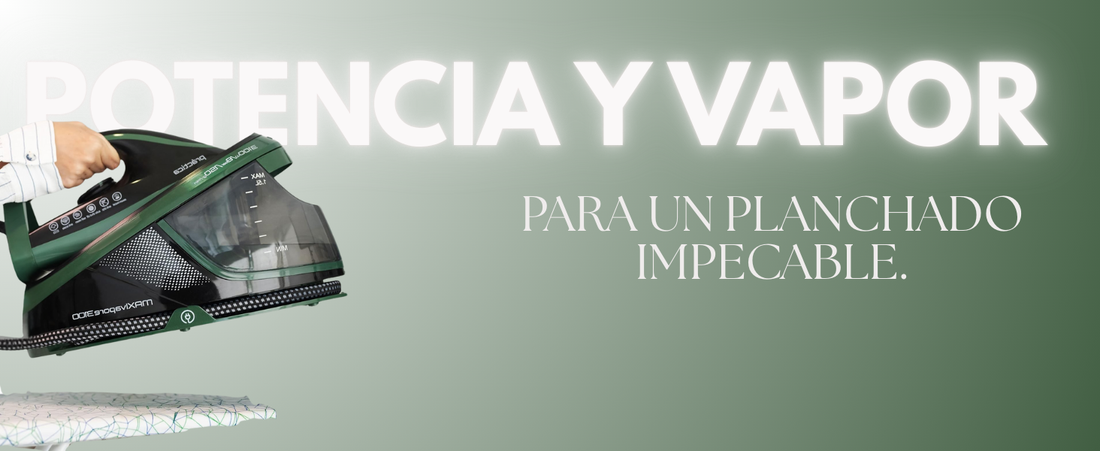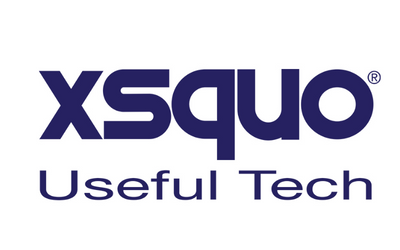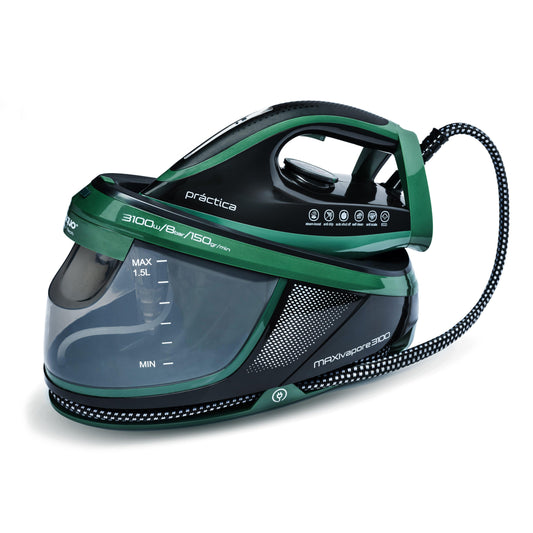
How to Clean an Ironing Center: A Practical and Easy Guide
Cleaning an ironing center is essential to maintain its performance and prolong its lifespan. The buildup of limescale and dirt can affect the quality of ironing and cause problems with the appliance. Knowing the materials and steps required for effective cleaning ensures optimal results. Furthermore, establishing a maintenance routine helps prevent common problems and ensures efficient use of the device.
Importance of cleaning the ironing center
Cleaning your ironing center is key to maintaining its effectiveness and prolonging its lifespan. Over time, limescale and dirt buildup can cause significant operational issues. 
Benefits of keeping the center clean
A well-maintained ironing center not only optimizes its performance but also contributes to more effective ironing. Keeping it clean provides multiple benefits, including the following:
- Better performance: A clean ironing center generates steam more efficiently, making it easier to iron clothes and ensuring optimal results.
- Stain Prevention: Dirt and limescale can leave marks on clothing, affecting its appearance. Cleaning regularly minimizes this possibility.
- Long service life: Proper maintenance prevents premature wear and tear on your appliance, allowing it to operate smoothly for much longer.
- Energy saving: A clean center requires less energy to operate at full capacity, which translates into lower electricity consumption.
Common problems due to lack of cleaning
Failure to clean the ironing center can lead to a series of problems affecting both the device and the clothes being ironed. The most common problems are:
- Limescale buildup: Mineralization of water causes the formation of limescale deposits that clog the steam system and can damage the appliance.
- Generation of bad odors: Accumulated dirt can release unpleasant odors when the appliance heats up, affecting the ironing experience and the freshness of your clothes.
- Water leaks: Blocking the reservoir can cause leaks, resulting in inefficient use of the device and possible moisture damage.
- Wear of internal components: Lack of cleaning can cause deterioration of internal parts, leading to further degradation and eventual failure of the appliance.
Materials needed for effective cleaning
Having the right materials is essential to ensure effective cleaning of your ironing center. Below are the tools and products that will make this task easier.
Essential tools
It's essential to have a set of tools that allow you to clean efficiently. The most important ones are listed below:
- Microfiber cloths: These are ideal for cleaning, as they are soft and won't scratch surfaces. They are used both to clean the soleplate of the iron and to dry other parts of the steam generator.
- Container or bowl: A container is needed to mix the cleaning products, particularly the vinegar and water. This is a key element in the descaling process.
- Cleaning gloves: Protecting your hands is important, especially when handling cleaning products. Gloves ensure cleaning is comfortable and safe.
- Plastic scraper: If there is residue stuck to the sole, a plastic scraper is useful for removing it without damaging the surface. Use it carefully to avoid scratching.
Recommended cleaning products
In addition to tools, it's important to have specific products on hand to help keep your ironing center in optimal condition. The following are highly recommended:
- White vinegar: This natural product is excellent for removing limescale buildup and dirt. Its use in the cleaning mixture helps descale the ironing center's tank and hoses.
- Distilled water: It's preferable to use distilled water instead of tap water. This prevents mineral buildup that can clog the steam system and damage the appliance.
- Sodium bicarbonate: This ingredient can be used as a natural cleaner. Mixed with water, it can form a paste that helps remove dirt from the soleplate of the iron.
Preparation with these materials not only ensures effective cleaning but also contributes to the long-term maintenance of the ironing center. This is key to prolonging the appliance's lifespan and ensuring its optimal performance.
Steps to clean an ironing center
Knowing the correct way to clean an ironing center is essential to maintaining its optimal performance. Every part of the device deserves specific attention, from the tank to the soleplate. Below are the steps required for effective cleaning.
Preparations before cleaning
Before beginning the cleaning process, it's essential to make some preparations. First, unplug the appliance to ensure safety. It's also advisable to let the device cool completely if it has been used recently. Once cool, empty the water tank to facilitate cleaning.
Cleaning the water tank
The water tank is one of the most critical components for its proper function. The buildup of limescale and dirt can affect the quality of the steam generated.
Using vinegar to remove limescale
Mixing equal parts white vinegar and distilled water is an excellent strategy for removing limescale. Pour this mixture into the tank, filling it almost completely. Then, plug in the steam generator and let it heat up. Once heated, activate the steam function for a few minutes, allowing the mixture to clean the internal hoses.
Method for descaling Rowenta ironing centers
For Rowenta models, it's recommended to use the self-cleaning program, if available. In this case, filling the tank with water and following the manufacturer's instructions optimizes the descaling process. This specific method maximizes limescale removal efficiency, keeping the appliance in optimal condition.
Clean the soleplate of the iron
The soleplate of the iron is the part that comes into direct contact with the clothes, so proper cleaning is crucial.
Natural cleaning options
You can opt for natural solutions such as a mixture of baking soda and water, or use vinegar on a microfiber cloth. These cleaners are gentle yet effective and avoid damaging the sole's surface. Applying the mixture to a cloth and rubbing gently ensures that any residue is removed without scratching the surface.
Techniques for removing residual dirt
Using a plastic scraper can be helpful to remove any stubborn dirt. It's recommended to use a circular rubbing technique. Ensuring the sole is completely dry after cleaning is essential to prevent rust.
Filter and accessory care
Paying attention to your iron's filters and other accessories can extend its lifespan and improve its performance.
Filter maintenance process
Limescale filters, when present, should be checked regularly. It is recommended to remove them and rinse them with warm water to remove any residue buildup. Using a soft brush makes cleaning the filters easier, ensuring they are completely clean.
Cleaning supports and covers
The ironing boards and covers can also accumulate dust and dirt. Cleaning these elements with a damp cloth or a mixture of water and vinegar ensures they remain in proper condition. This not only improves the aesthetics of the ironing center but also prevents dirt from transferring to clothing during use.
Regular maintenance of the ironing center
Proper, regular maintenance allows your ironing center to operate efficiently and prolong its lifespan. Implementing certain practices can prevent the buildup of residue and limescale, ensuring high-quality ironing at all times.
Daily tips for efficient use
Performing a series of daily routines can help keep your ironing center in optimal condition. These practices are simple and, if applied regularly, will result in a longer-lasting and more efficient appliance.
- Cleaning the sole after each use: It's a good idea to clean the soleplate of your iron after each session. A damp microfiber cloth can help remove residue or stains that may have accumulated after ironing.
- Using distilled water: Filling the tank with distilled water is key to preventing mineral buildup. This type of water significantly reduces the risk of limescale buildup.
- Discard excess water: If there's any water left in the tank after use, it's best to empty it. Keeping the tank empty not only helps prevent mold or unpleasant odors, but also prevents corrosion.
- Verification of parts: Regularly checking the condition of hoses, filters, and other components can prevent major problems. Replacing any damaged parts will ensure the center operates properly.
Recommendations for proper ironing and care
Maintaining your iron goes beyond cleaning its components. Adopting good practices during daily use is essential to optimize its performance.
- Temperature calibration: Adjusting the temperature according to the type of fabric being ironed not only protects garments but also improves the performance of the appliance. Using high temperatures on delicate fabrics can damage them and affect the iron's performance.
- Use of hangers: Hanging clothes on hangers before ironing makes the job easier, allowing easier access and avoiding additional wrinkles.
- Periodic cleaning of tanks and filters: Regular cleaning of the filters is vital to ensure unobstructed steam flow. Cleaning them periodically will prevent residue from accumulating and potentially blocking the steam outlet.
- Cable maintenance: Taking care of your steam generator's cord is crucial. Keeping it away from heat sources and avoiding unnecessary pulling will prolong its lifespan.
Frequently asked questions about cleaning ironing centers
This section will answer some of the most common questions related to cleaning ironing centers. Clarifying these aspects can facilitate the proper maintenance and operation of the device, promoting its longevity and effectiveness.
How often should you clean the ironing center?
Regular cleaning is essential to ensure the ironing center's proper functioning. It's recommended to clean the soleplate and water tank after each use. This habit will prevent the buildup of residue that can affect the appliance's performance and ironing quality. Furthermore, it's advisable to perform a more thorough cleaning every month or after approximately five ironing sessions, depending on the device's usage. This includes descaling the system and cleaning the filters, which will ensure the appliance's longevity.
Is it safe to use vinegar as a cleaner?
Vinegar is a natural, effective, and safe cleaner for most ironing center surfaces. Its ability to remove limescale and dirt makes it a popular choice among users. However, special care must be taken not to mix it with abrasive products or harsh detergents, as these can damage the device's surface. It is recommended to clean with white vinegar, diluted with water, and follow the appropriate application instructions. This way, you can enjoy a clean appliance without risk of damage.
What to do if the steam comes out dirty?
When you notice that the steam emitted by your ironing center is dirty, it indicates that there may be limescale or dirt buildup in the hoses or water tank. This problem is usually a result of not cleaning the device regularly. To resolve this, it's advisable to perform a deep cleaning, including using a vinegar and water mixture to descale the appliance. This will remove any clogged residue from the hoses, thus restoring the steam quality. If the problem persists, it's recommended to consult the manufacturer's manual to see if there are other specific procedures for the model used.




